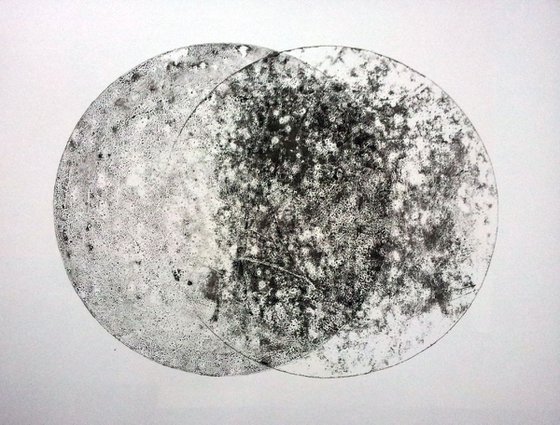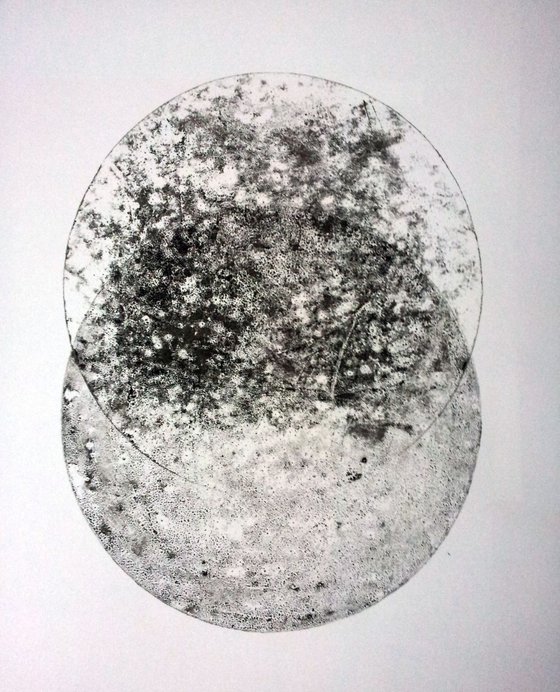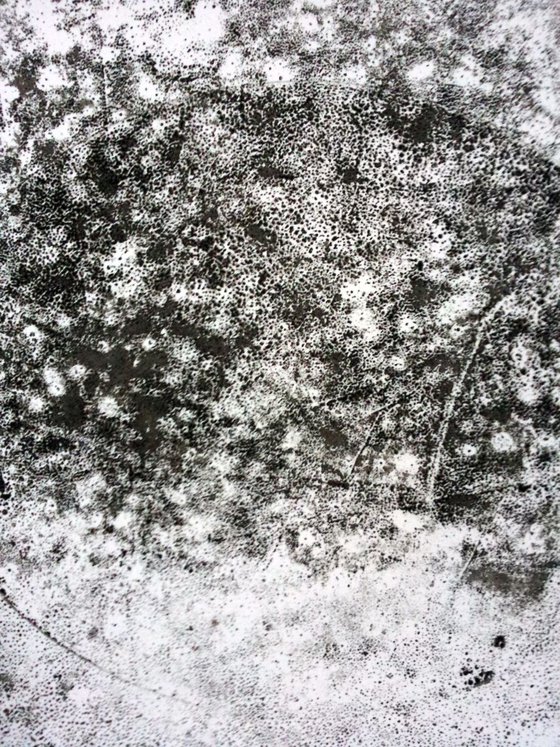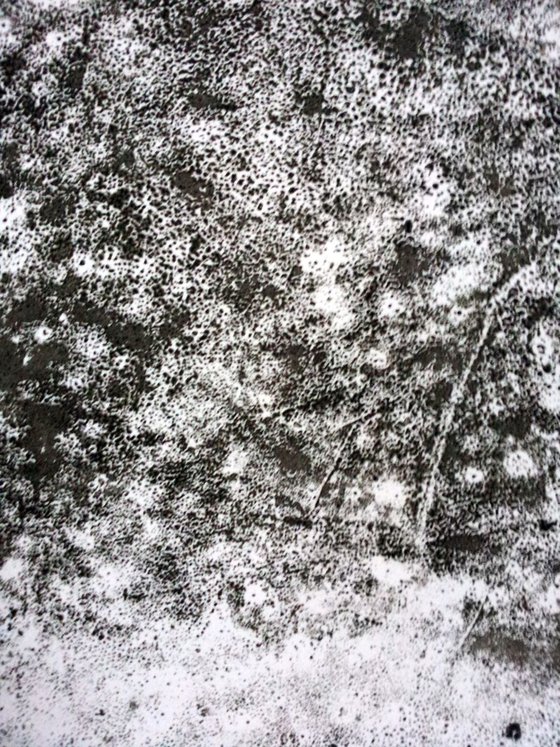- By medium
- By subject
- By budget
- Sales
- Gift cards
- Discover all art
- Artists
- Editors’ picks
- Ideas
Artwork description:
This image is inspired by several thoughts during the making of its substantive composition. The image is made using Fossil Black (Slate Rock embedded with Fossils) found in Watchet.
This symbol had been utilised by the Christian church as a symbol of the Christ, the symbol itself used abstractly as a fish symbol through the use of the centre piece where the 'division' occurs, used as the uniting of the male and female principles and the Christos produced through this union.
However, this symbol was also an ancient symbol for fertility and sexuality, lending itself to the sexual region of the feminine and therefore a symbol of the sacred feminine. Here, the symbol itself may have been born from earlier sex cults and fertility rites, of which the early Christian sects may have adopted before its repression due to Patriarchal division.
Yet this image, working in parallel with DIVIDE, appears to reunite with the 'one', as though the objective of life is to become aware that as one seeks for something ('unaware [implanted commercialised] hunger - Ranciere), one will not find what one really seeks. Only as one contemplates in stillness, will one become aware that reality is only but a dream and that we already are the Brahma, Buddah or Christos, leading towards enlightenment.
This image serves as initiation into REUNION or DISOLVING into the original source of consciousness within us all.
**************************************************************************************
ICHTHYS
The first appearances of the ichthys symbol in Christian art and literature date to the 2nd century AD. The symbol's use among Christians had become popular by the late 2nd century, and its use spread widely in the 3rd and 4th centuries.
The symbolism of the fish itself may have its origins in pre-Christian religious imagery. For example, Orpheus was depicted as a "fisher of men" as early as the 3rd or fourth century BC. The fish was used as a symbol in a number of other near-eastern religions as well, often as a sacred (or taboo) food.
The fish was sacred to the goddess Atargatis, for example, who was said to cause tumors in those who ate them. Fish were only allowed to be eaten by priests during rituals devoted to Atargatis, in the belief that they represented her body.
Despite the thematic similarities of these various sacred fish, some scholars have argued that there is no direct link between them and the Christian symbol or practice of the Eucharist; instead, the Christian usage was probably simply part of a larger, popular religious motif of the time
Materials used:
Fossil Black Pigment on Cartridge Paper Stock, Medium.
Tags:
#brahmaand #bideford #christos #brahman #ithychis #black and white #colourfull #beach scene #printmaking #earth #monotype #panda #jesus #mineral #awareness #monotype print #reunionICHTHYS (2016) Print
by Adam Grose MA RWAAN
19 Artist Reviews
£250 Sold
- Print on Paper
- From a limited edition of 1
- Size: 59.5 x 54 x 0.1cm (unframed) / 42 x 33cm (actual image size)
- Signed and numbered on the back
- Style: Organic
- Subject: Abstract and non-figurative
Do you like this artwork?
This artwork has sold, but the artist is accepting commission requests. Commissioning an artwork is easy and you get a perfectly personalised piece.
Loading
Artwork description
This image is inspired by several thoughts during the making of its substantive composition. The image is made using Fossil Black (Slate Rock embedded with Fossils) found in Watchet.
This symbol had been utilised by the Christian church as a symbol of the Christ, the symbol itself used abstractly as a fish symbol through the use of the centre piece where the 'division' occurs, used as the uniting of the male and female principles and the Christos produced through this union.
However, this symbol was also an ancient symbol for fertility and sexuality, lending itself to the sexual region of the feminine and therefore a symbol of the sacred feminine. Here, the symbol itself may have been born from earlier sex cults and fertility rites, of which the early Christian sects may have adopted before its repression due to Patriarchal division.
Yet this image, working in parallel with DIVIDE, appears to reunite with the 'one', as though the objective of life is to become aware that as one seeks for something ('unaware [implanted commercialised] hunger - Ranciere), one will not find what one really seeks. Only as one contemplates in stillness, will one become aware that reality is only but a dream and that we already are the Brahma, Buddah or Christos, leading towards enlightenment.
This image serves as initiation into REUNION or DISOLVING into the original source of consciousness within us all.
**************************************************************************************
ICHTHYS
The first appearances of the ichthys symbol in Christian art and literature date to the 2nd century AD. The symbol's use among Christians had become popular by the late 2nd century, and its use spread widely in the 3rd and 4th centuries.
The symbolism of the fish itself may have its origins in pre-Christian religious imagery. For example, Orpheus was depicted as a "fisher of men" as early as the 3rd or fourth century BC. The fish was used as a symbol in a number of other near-eastern religions as well, often as a sacred (or taboo) food.
The fish was sacred to the goddess Atargatis, for example, who was said to cause tumors in those who ate them. Fish were only allowed to be eaten by priests during rituals devoted to Atargatis, in the belief that they represented her body.
Despite the thematic similarities of these various sacred fish, some scholars have argued that there is no direct link between them and the Christian symbol or practice of the Eucharist; instead, the Christian usage was probably simply part of a larger, popular religious motif of the time
Materials used:
Fossil Black Pigment on Cartridge Paper Stock, Medium.
Tags:
#brahmaand #bideford #christos #brahman #ithychis #black and white #colourfull #beach scene #printmaking #earth #monotype #panda #jesus #mineral #awareness #monotype print #reunion14 day money back guaranteeLearn more





